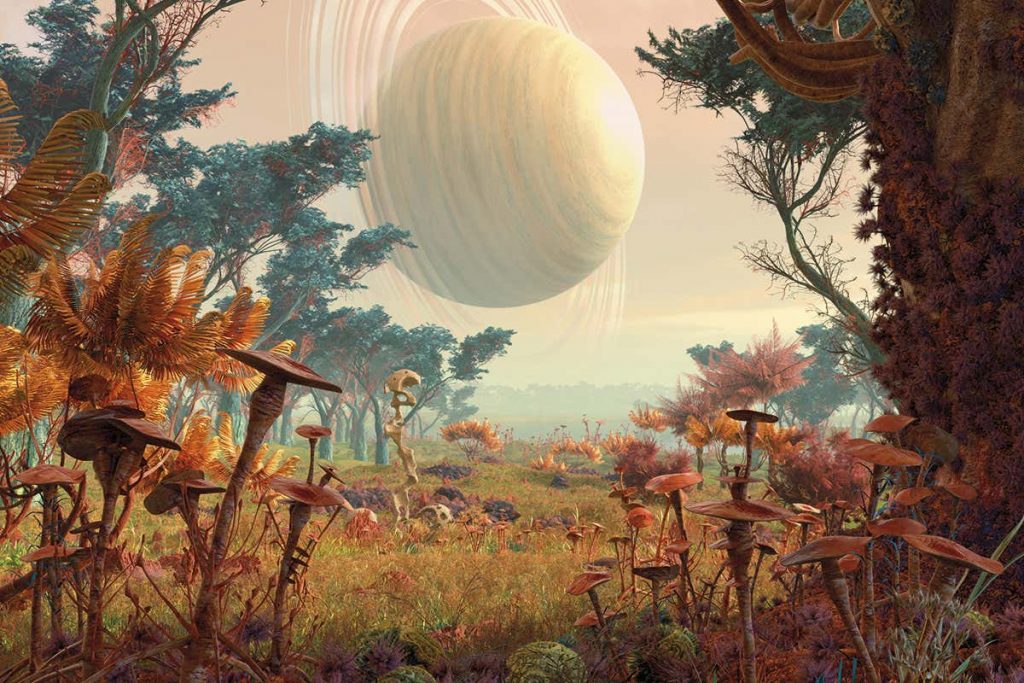Bigger, better, more suited for biology: let’s not overlook superhabitable planets with potential.
A superhabitable planet is one that has a better chance of supporting life than our own planet, Earth.
Because Earth is the only known inhabited planet and life on it is dependent on liquid water, efforts to find exoplanets that could support life are centered on Earth-like worlds. However, some scientists believe that other types of planets may have conditions for life that are as good as — or even better than — Earth. Indeed, some scientists argue that focusing entirely on Earth-like worlds may be too “anthropocentric and geocentric,” potentially blinding us to the possibilities of exobiology.
“We are so over-focused on finding a mirror image of Earth that we may overlook a planet that is even more well-suited for life,” Dirk Schulze-Makuch, an astrobiologist at Washington State University and the Technical University of Berlin.
Schulze-Makuch and his colleagues searched the Kepler Object of Interest Exoplanet Archive for potentially superhabitable exoplanets, focusing on 4,500 planetary systems with rocky planets within their stars’ habitable zones, where liquid water can persist. The researchers published their findings in the journal Astrobiology.
The scientists looked at planetary systems
with yellow dwarf stars like our sun, as well as orange dwarf stars, which are cooler, dimmer, and less massive than our sun.
“Our sun is actually not the best kind of star for hosting a planet with lots of life on it,” Schulze-Makuch said.
In the Milky Way, orange dwarf stars are roughly 50% more common than yellow dwarf stars. Unlike our sun, which has an estimated lifetime of less than 10 billion years, orange dwarfs have lifetimes ranging from 20 billion to 70 billion years. Because complex life took approximately 3.5 billion years to emerge on Earth, the longer lifetimes of orange dwarf stars may allow planets within their habitable zones more time to develop life and accumulate biodiversity.

Because Earth is approximately 4.5 billion years old,
the researchers hypothesized that the sweet spot for life would be a planet between 5 billion and 8 billion years old.
The size and mass of a planet can also affect how well it can support life, according to the researchers. A larger-than-Earth rocky planet would have a larger habitable surface area and possibly a thicker, more stable atmosphere. A planet 1.5 times the mass of Earth would likely retain its interior heat for a longer period of time, which would help keep its core molten and its protective magnetic field active for a longer period of time during which life could arise and evolve.
Worlds that are slightly warmer than Earth
by about 8 degrees Fahrenheit (5 degrees Celsius) may be habitable, as they may have larger tropical zones, which support more biodiversity on Earth. However, warmer planets might also need more moisture, since greater heat could expand deserts.
Furthermore, planets with the same land area as Earth but divided into smaller continents may be more habitable. When continents become particularly large (like Earth’s past continent Gondwana did about 500 million years ago), their centers are often located far from oceans, resulting in vast, inhospitable deserts in their interiors. Moreover, because Earth’s shallow waters support more biodiversity than its deep oceans, scientists believe that planets with shallower waters could support more life.
In total,
Schulze-Makuch and colleagues discovered 24 potentially habitable planets. None of these worlds met all of the criteria the researchers established for superhabitable planets, but one did meet at least two — KOI 5715.01.
KOI (Kepler Object of Interest) 5725.01 is a 5.5 billion-year-old planet with a diameter of 1.8 to 2.4 times that of Earth, orbiting an orange dwarf 2,965 light-years away. It may have an average surface temperature about 4.3 degrees F (2.4 degrees C) lower than Earth, but if it has more greenhouse gases to trap heat than Earth, the researchers believe it could be superhabitable.
Schulze-Makuch’s own favorite potentially superhabitable world from these 24 was KOI 5554.01. This planet is approximately 6.5 billion years old, has a diameter 0.72 to 1.29 times that of Earth, and orbits a yellow dwarf 700 light-years away.
“I really liked the average surface temperature — about 27 degrees C [80 degrees F],” Schulze-Makuch said. “And it’s probably about Earth’s size, and a little bit older than Earth.”
Each of these 24 potentially habitable planets
is more than 100 light-years away from Earth. This places them too far away for NASA’s Transiting Exoplanet Survey Satellite (TESS) spacecraft to capture high-quality images in order to learn more about them.
After all, Schulze-Makuch explained that future spacecraft, such as NASA’s recently launched James Webb Space Telescope, NASA’s LUVOIR space observatory mission concept, and the European Space Agency’s PLATO space telescope, could shed light on these worlds.
“We caution that while we search for superhabitable planets, that doesn’t mean that they necessarily contain life,” Schulze-Makuch said. “A planet can be habitable or superhabitable but uninhabited.”


